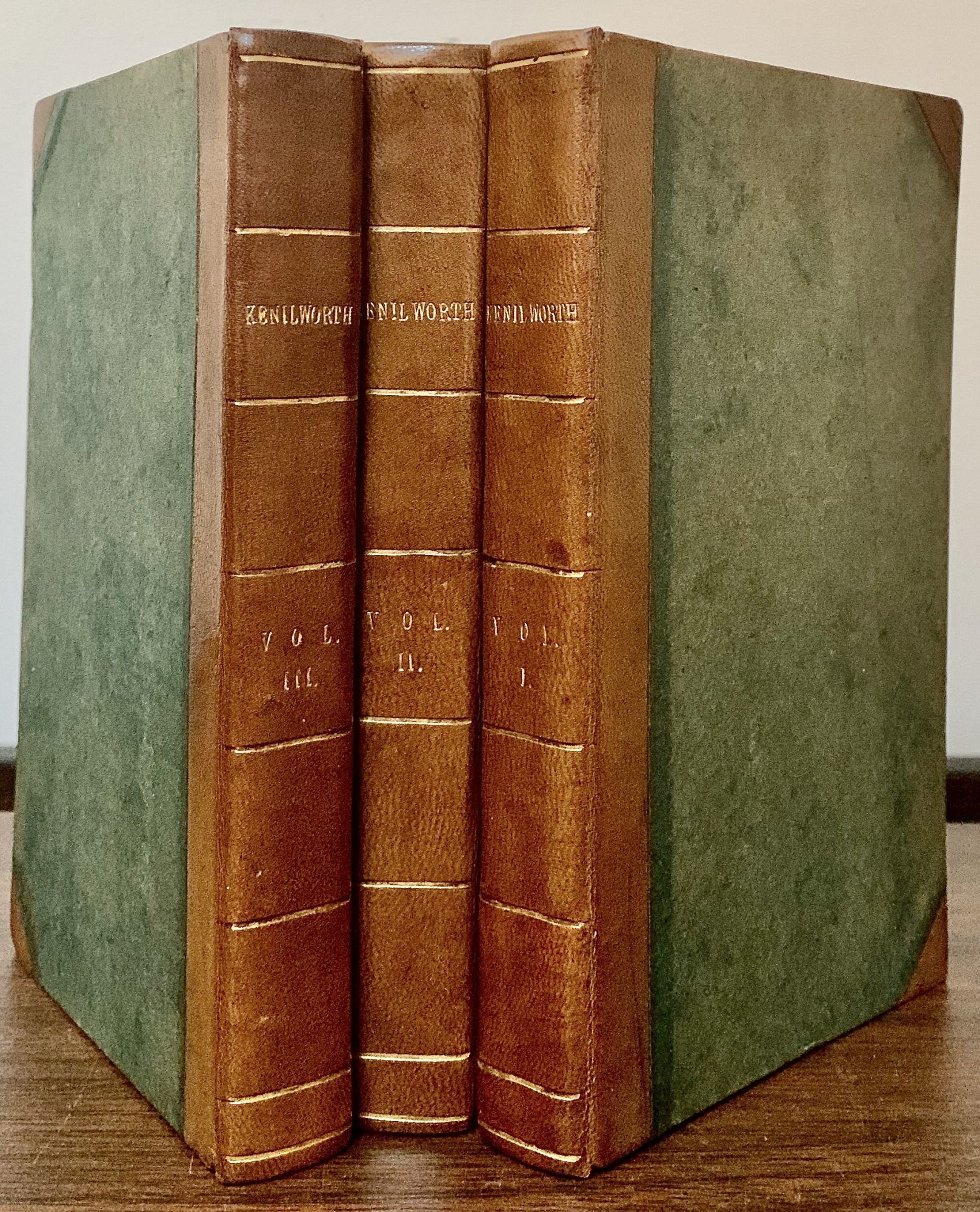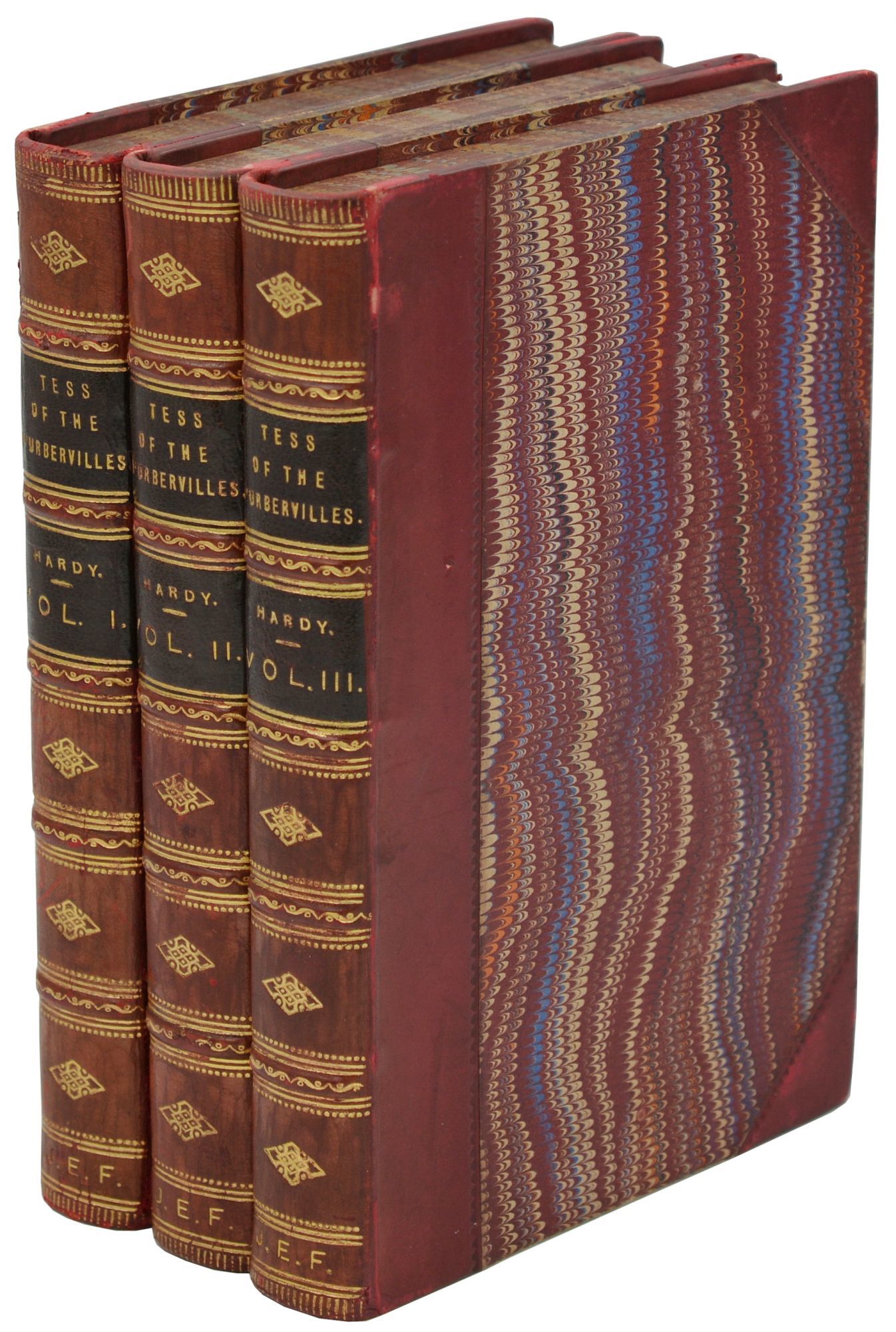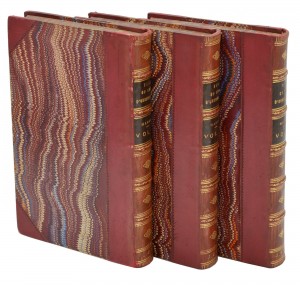Related Information
A single book published in three volumes. Principally associated with 19th-century novels, which were typically published in this form because of the popularity of the commercial lending library. As the economics of publishing changed, the subscription lending libraries ceased to dominate the market, and the three-decker format became prohibitively expensive.
In his essential reference work, ABC for Book Collectors, John Carter is brusque in noting that the phrase is “scarcely ever used, except of 19th-century novels.”
Sir Walter Scott’s Kenilworth, published by Constable and Ballantyne in Edinburgh in 1821, is often credited with being the book which established the three-decker as a business model, although there had been several books published in three volumes in the decade before this (including works by Jane Austen).
The three-decker should not be confused with the modern trilogy of novels, which are three separate books, usually published many years apart. All volumes of a 19th-century three-decker were published at the same time, to encourage people to purchase subscriptions to a lending library at a higher rate in order to ensure they could borrow all three volumes at the same time, and thus be able to read the book uninterrupted. Three-deckers were rarely published after 1896.
Sources:
Guinevere L. Griest, Mudie's Circulating Library and the Victorian Novel. Indiana University Press, 1970.
John Carter & Nicholas Barker, ABC for Book Collectors (8th Edition). The Oak Knoll Press, 2006.
Examples:
Kenilworth; A Romance By The Author Of "Waverly," "Ivanhoe,"&c
by Sir Walter Scott

Edinburgh & London: Archibald Constantable Cadell and Co., and John Ballantyne And Hurst Robinson, And Co, 1821. First edition. Hardcover. Contemporary flat spine, three quarter brown morocco and green boards with marbled endpapers. Near fine. 3 Vols. 320, 369, 348 pages. 18.5 x 11.5 cm. Half titles. First state, mixed state with printer's on the verso of the titles, Vol. 1-2. p.119 in first state in Volume two and p. 338 in second state. TODD & BOWDEN 149AA-B. WORTHINGTON 11. Two pages of adverts end of Vol. III. Clean, fresh set.
Offered by Roy Young Bookseller.
by Thomas Hardy

London: James R. Osgood, McIlvaine and Co, 1891. First Edition. Near Fine. 3 Volumes. First edition, first printing, first issue. Bound in contemporary half-leather binding over marbled paper covered boards, with all edges marbled and marbled endsheets; binder's stamp of Mudie to verso of front free endpaper. Near Fine with light rubbing to bindings, spines slightly sunned, foxing to pages and former owner name to front blank of each volume. A Victorian tripple-Decker in lovely contemporary binding. Although this novel initially received mixed reviews upon publication, it is now considered a major work of 19th-century literature.
Offered by Burnside Rare Books.
